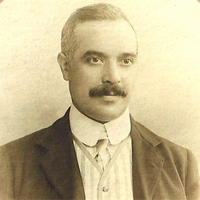Reader's Page
Ancient Astronomers
Some things I put together in my own research on this ages ago: the life expectancy of the people who built Newgrange was 35 years, so these monuments were built by very young people. Many of the stones were not local, and the people did not have wheel technology, so it is guessed that they moved the stones relatively long distances using rolling logs.
Before Newgrange and other mounds were excavated, the local people had legends about them. They knew something was there—this was information handed down through the generations, even though some researchers say there is no link between the neolithic residents and later residents. I'm not sure that's true, based on people knowing that the mounds were more than just hills. Also, at one time there was a church built on top of the hill at Knowth, I believe.
There's a great book about the settlement of Ireland called The Atlantean Irish by Bob Quinn, who is not an academic or an anthropologist, but an independent scholar. Here's a link: Atlantean Irish.
Quinn's theory is that the west coast of Ireland (the area known as Connemara) was a major trading station not only for Vikings, but for Spain and North Africa, and for a very long time. Traders from Arabic countries (especially Phoenicia) and Spain took an Atlantic Ocean route, not a land route across Europe. This is in line with your information about the DNA of the human remains found at a neolithic burial site—Atlantean rather than Western European.
Can't wait to read more!
Cecilia D.
May 23, 2016
Cyfarchion Fran,
The mounds were the homes of the ancient deities, scientifically designed for astronomical purposes.
At the beginning, the archaeological discoveries at Coleraine dated about 8000 BC of habitable dwellings at a Northern Ireland site is comparable and compatible with my circa 6000 BC Morton site discoveries in southwest Scotland. The ancient mesolithic Morton people built a rude shelter on the beach whose birch tree posts were positioned so the prone sunset observer could accurately predict when sunset would occur over far distant hills; every solstice and equinox annual event was tracked even then.
Regarding the Knowth K53 calendar stone, my chapter text shows it to be a sun calendar count, a moon calendar count, with moon phase indicators from full moon to crescent and back again, which proves a five-day week was integral with both calendar systems.
The top line has the moon’s full to new phases in five-day week phases; below, the wiggly hoops number 30, the days/nights of a moon month; in the middle, the line of 16 crescent images denotes the number of sun calendar months a year.
Kind regards,
Neil Thomas
May 23, 2016
Hi Fran,
I saw and enjoyed the article last week, well done with it. I am so lucky to live here.
Cheers!
Martin Byrne
June 8, 2016
Leopold Bloom & Italo Svevo
Hello Fran,
Thank you for sending this! It is really wonderful work. I am very happy to have my photo on the page!
Best wishes,
Diana Robinson
March 3, 2016
I have spent the last hour reading! All the fascinating stories about Joyce! I am woefully poorly read, and your knowledge and writing leaves me astounded. ... Your site is lovely, because of its content. My only comment is that there is so much, and its all so good it is almost daunting. ... Anyway, I am so incredibly impressed with your intellect, your tone of voice and your tremendous amount of hard work. Brava!
Lisa Maxwell
Hastings-on-Hudson, NY
May 24, 2016
Dear Frances,
I've been meaning to contact you for some time as I thoroughly enjoyced your piece on Leopold Bloom and Svevo.
I'm taking the liberty of introducing you to "Altman the Saltman."
Best regard and keep up the good work.
Vincent Altman O'Connor
March 11, 2018

The Lost World of "Old Europe"
Hello,
Thanks very much for the link. Good article, and you must visit Romania when you are able to. Good luck with your future work. Keep in touch—
Alina Grigoras Butu, Editor in Chief
The Romania Journal
Bucharest, Romania
September 12, 2016
王 忠杰, 画家
Wang Zhongjie, Artist
Hi Frances,
You should see Zhongjie's latest. They are very different, and they need to be seen in reality to be really appreciated. There will be a chance, I am sure. He is grateful for the article. Thank you very much again, Frances, and keep in touch!
Monica Dematté
May 11, 2017
Hello Frances Stevens!
I’m Xing Peijun,Director of Mo Art Space. Thank you very much for your works of Wang Zhongjie, and thank you for helping us with the article on your website. We are happy to send new works (last two years) of Zhongjie. I hope that you will come to China to see us.
Best wishes,
邢培俊 Xing Peijun
June 2, 2017
